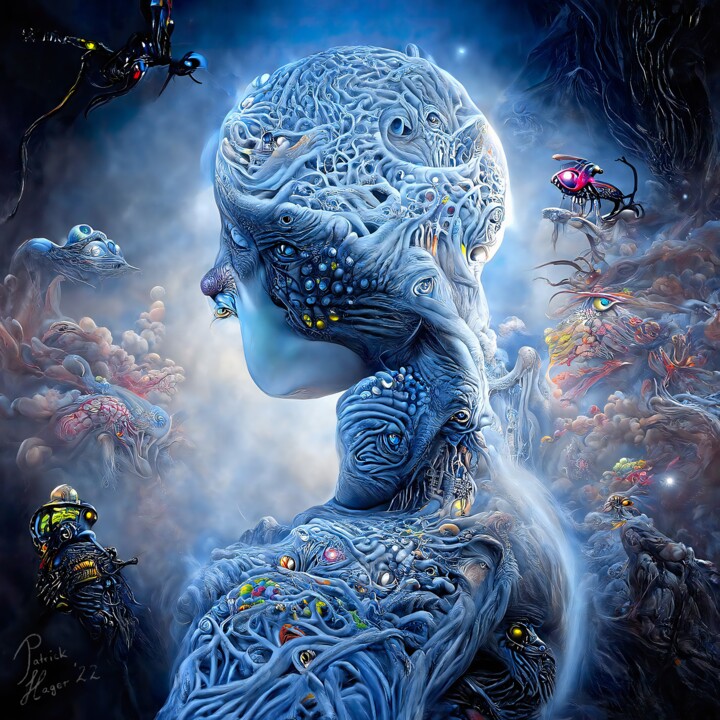Artificial Intelligence and the Arts involve the use of AI tools to enhance, augment, and improve existing artistic creations while also creating entirely new pieces of visual art, videos, and music. AI algorithms are becoming more advanced, allowing for greater creativity and intricate outputs.
The collaboration between human artists and AI is crucial, as AI alone cannot replace artistic creativity. Instead, AI serves to enhance and expand the possibilities of artistic expression. The future of AI art is promising, with the potential to explore new forms of creativity and push the boundaries of artistic innovation.
While debates exist about whether AI-generated art can be considered real art, it is clear that AI has the power to transform and revolutionize the art world.
Ai In The Creation Of Art
Artificial intelligence (AI) is revolutionizing the field of art by playing a significant role in the creation and production of artworks. With the advancements in AI algorithms, artists now have access to powerful tools and features that enhance existing artwork and enable the creation of entirely new and unique pieces. Let’s explore how AI is transforming the art world.
Enhancing Existing Artwork
AI tools and features help enhance, augment, and improve existing creations. Through the utilization of AI, artists can reimagine an existing piece of art in a specific artistic style, bringing a whole new perspective to the original work. Machine learning models can analyze patterns and characteristics of different art styles and apply those elements to the artwork, resulting in a visually stunning fusion of traditional and contemporary approaches. This application of AI allows artists to experiment with different techniques and styles, broadening the possibilities and pushing the boundaries of what is considered possible in the art world.
Creating New Artwork
AI has opened up a world of possibilities for artists to create entirely new pieces of visual art, videos, and music. Using AI algorithms, artists can generate artwork from scratch, leveraging the machine’s ability to learn from vast datasets and produce intricate and unique outputs. While human creativity remains an integral part of the artistic process, AI can act as a catalyst for innovation, providing artists with new sources of inspiration and enabling exploration of uncharted territories. By collaborating with AI, artists can unlock new artistic expressions and challenge traditional notions of creativity.
The Impact Of Ai On The Art World

Credit: www.artmajeur.com
Frequently Asked Questions On Artificial Intelligence And The Arts
How Is Ai Used In The Arts?
AI is used in the arts to enhance and improve existing creations, reimagine art in different styles, and create new pieces of visual art, videos, and music. AI algorithms are becoming more sophisticated, allowing for new forms of creativity while still enhancing human artistic expression.
AI art is meant to enhance, not replace, human creativity.
Will Ai Replace The Arts?
AI will not replace the arts. It will collaborate with human artists to explore new directions and determine the value of the output. AI tools can enhance existing creations and help artists create new pieces, but human creativity remains essential.
The future of AI in art promises more sophisticated and intricate outputs, enhancing human creativity rather than replacing it.
What Is The Future Of Artificial Intelligence In Art?
The future of artificial intelligence in art is promising. AI algorithms are advancing, enabling them to learn from larger datasets and produce more intricate creations. AI art enhances human creativity rather than replacing it, leading to new forms of artistic expression.
Is Art Generated By Artificial Intelligence Real Art?
Art generated by artificial intelligence can be considered real art, as it is created through AI algorithms. Although AI may not possess creativity or imagination, it can combine elements from different sources to produce unique visual artworks.
Conclusion
Artificial intelligence has paved the way for a new era in the arts, offering endless possibilities for creativity and innovation. With AI tools and features, artists can enhance and reimagine existing creations, as well as create entirely new pieces of art, music, and videos.
While some may fear that AI will replace human artists, it is important to recognize that AI is meant to enhance human creativity, not replace it. As AI algorithms continue to evolve and learn, the future of AI art looks promising, opening new doors for artistic expression that were previously unimaginable.
The collaboration between human artists and AI will shape the future of the arts, pushing boundaries and unlocking new forms of creativity.





